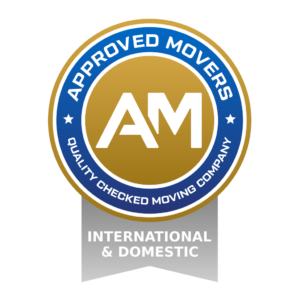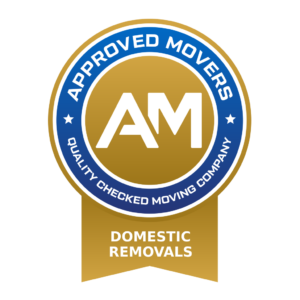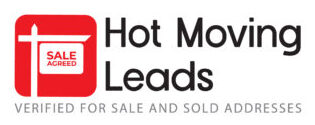
The Advantages of Brand Architecture
Expanding any business requires a strategic and well-organised approach, especially within the removals industry. As your company grows, developing a strong brand and a functional operational structure is crucial. Many brands experience rapid growth only to stagnate and become targets for acquisition by larger corporations. To ensure your removals business avoids this fate, it is essential to understand and implement effective brand architecture. Here, we explore the concept of brand architecture, its importance, and how to choose the most suitable type for your removals company.
What is Brand Architecture?
Brand architecture is a method used to organise the various sub-brands within a larger brand. It serves as a blueprint that illustrates how the main brand branches into a structured network of sub-brands and their interrelationships. This system is particularly beneficial for larger brands, providing a clear framework that helps both marketers and executives understand the brand’s organisation. Moreover, it lays a solid foundation to enhance brand awareness, both for individual sub-brands and the overarching brand.
In the context of the UK removals industry, brand architecture can play a pivotal role in managing the expansion of your company. As your business acquires new capabilities or expands into new markets, an organised brand structure will ensure consistent communication, operational efficiency, and sustained growth.
Types of Brand Architecture
There are three primary types of brand architecture that your removals company might consider:
1. Branded House
A branded house strategy involves using a single overarching brand name across all sub-brands. For instance, a removals company could have different services such as “RemovalsPal Home Moves,” “RemovalsPal Office Relocations,” and “RemovalsPal Storage Solutions,” all under the same brand name. This approach builds brand equity, maintains consistency, and reduces customer confusion, making it easier to market your services under one recognisable brand.
2. House of Brands
The house of brands model is the opposite of a branded house. Here, each sub-brand operates under its own distinct name, independent of the parent brand. This strategy might be suitable for a removals company that has acquired other well-established companies and wants to maintain their individual brand identities. For example, if RemovalsPal acquired “MoveMasters” and “QuickShift,” those brands could continue operating under their original names, capitalising on their existing customer base and market reputation.
3. Endorsed Brand
An endorsed brand strategy sits between the branded house and house of brands models. In this approach, the parent brand endorses the sub-brands, which retain their individual names while still benefiting from the parent brand’s reputation. For instance, RemovalsPal might have “MoveMasters by RemovalsPal” and “QuickShift by RemovalsPal,” where the sub-brands operate independently but with the added credibility of the parent brand’s endorsement.
Choosing the Right Brand Architecture
Selecting the appropriate brand architecture for your removals company requires careful consideration of several factors, including your current brand structure, marketing objectives, product or service offerings, and future growth plans. Additionally, understanding your customer base is crucial, as any shift in brand architecture can significantly impact consumer behaviour and perceptions.
Benefits of a Consistent Brand Architecture
Implementing a consistent brand architecture offers several key advantages:
- Unified Market Presence: A cohesive brand structure strengthens your market presence by aligning your visual and verbal identity across all sub-brands. This clarity fosters customer trust and confidence, while also reassuring stakeholders within your company.
- Compelling Brand Story: Every brand benefits from a strong narrative. By unifying your brand architecture, you can craft a compelling story that resonates with both customers and employees, positioning your brand as a leader in the removals industry.
- Cross-Selling Opportunities: A well-organised brand architecture facilitates cross-promotion of services, enabling you to present your offerings as complementary solutions. This approach can drive revenue growth by encouraging customers to engage with multiple aspects of your brand.
- Enhanced Company Culture: A unified brand story can also bolster internal culture, creating a sense of shared purpose among your employees. This alignment is especially important during internal brand launches, helping to generate enthusiasm and support for new initiatives.
Preparing for Brand Consolidation
Consolidating your brand architecture requires a comprehensive, systematic approach. Key steps include:
- Conducting customer and prospect interviews to gain insights into market perceptions.
- Holding discovery sessions and internal interviews to align executive and stakeholder views.
- Performing a communications audit to assess your current brand messaging.
- Researching competitors to understand their brand structures and communication strategies.
- Developing communication strategies for both internal and external brand launches.
The Role of a Marketing Agency
Engaging a specialised marketing and SEO agency like RemovalsPal can be invaluable when consolidating your brand. As an impartial third party, we can provide strategic recommendations without the influence of internal biases. With our experience in branding within the removals industry, we can guide you through the process, ensuring that your brand architecture supports your long-term growth and success.
In conclusion, adopting the right brand architecture is a crucial step for any removals company looking to expand and solidify its position in the market. By carefully selecting and implementing a brand structure that aligns with your business goals, you can enhance brand awareness, streamline operations, and drive sustained growth.




